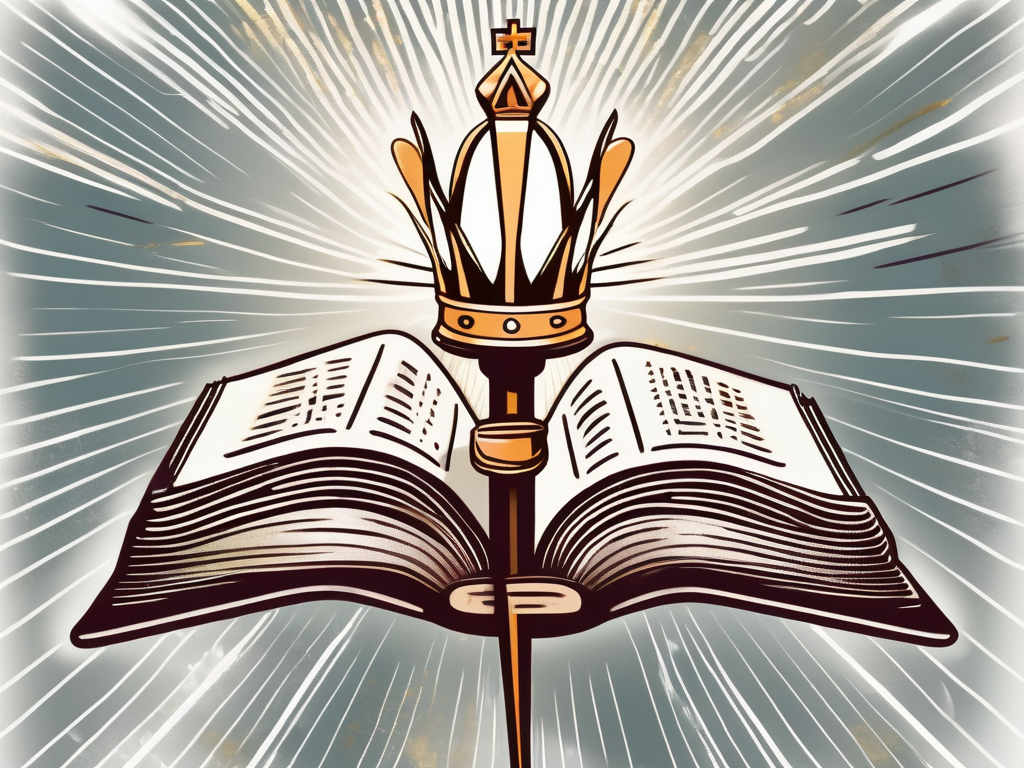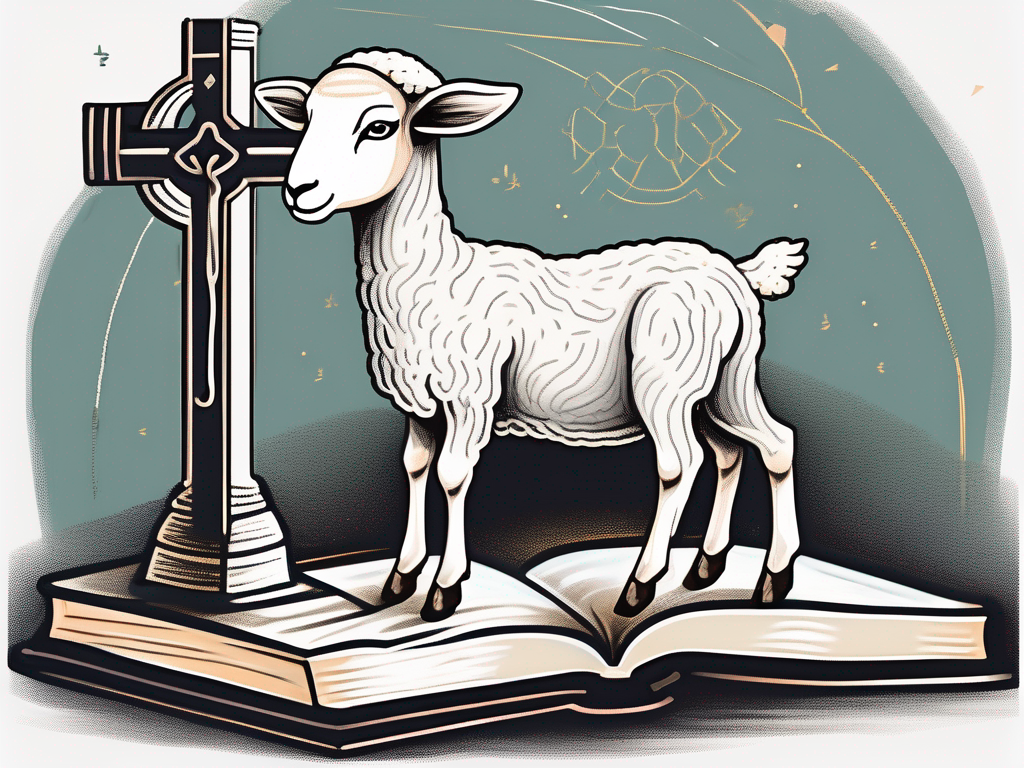Mary Magdalene is a historical figure who continues to fascinate and intrigue people to this day. Her story is shrouded in mystery and myth, making it difficult to separate fact from fiction. In order to uncover the truth about her life, it is essential to understand the historical context in which she lived.
The Historical Context of Mary Magdalene
In the first century Judea, the role of women was often limited and prescribed by religious and social norms. Women were expected to be obedient to their fathers and husbands, and their primary role was to bear children and manage the household. However, there were exceptions to these norms, and Mary Magdalene was one such exception.
While women in first century Judea had limited legal rights and were generally excluded from positions of power and influence, Mary Magdalene was able to break free from societal constraints and play a significant role in religious movements. Her story is a testament to the resilience and determination of women in a time when their voices were often silenced.
The Role of Women in First Century Judea
During this time, women faced numerous challenges and restrictions. They were expected to conform to societal expectations and adhere to strict codes of behavior. However, despite these limitations, some women, like Mary Magdalene, were able to rise above societal norms and make a lasting impact.
Women in first century Judea were often seen as property, with their worth determined by their ability to bear children and maintain a household. Their voices were often silenced, and their opinions were rarely taken into consideration. However, Mary Magdalene defied these expectations and emerged as a powerful figure in her own right.
Religious and Social Norms of the Time
Religious practices and beliefs played a crucial role in shaping societal norms during Mary Magdalene’s time. The Jewish religion, which was prevalent in Judea, upheld strict codes of behavior and placed a strong emphasis on purity and morality. These religious and social norms heavily influenced the lives of both men and women and affected Mary Magdalene’s story in significant ways.
The religious and social norms of the time dictated that women should be subservient to men and maintain their purity. However, Mary Magdalene challenged these norms by actively participating in religious movements and becoming a prominent disciple of Jesus Christ. Her courage and determination to follow her own path in the face of societal expectations is a testament to her strength and resilience.
Despite the challenges she faced, Mary Magdalene’s story serves as a reminder that women throughout history have defied societal norms and made significant contributions to society. Her legacy continues to inspire and empower women to this day.
Mary Magdalene in the Canonical Gospels
To get a better understanding of Mary Magdalene, we must delve into the accounts of her in the canonical gospels. These gospels, particularly the Gospel of Luke and the Gospel of John, shed light on her relationship with Jesus and challenge some commonly held myths about her.
Mary Magdalene in the Gospel of Luke
The Gospel of Luke portrays Mary Magdalene as a devoted follower and one of the women who financially supported Jesus’ ministry. Her unwavering faith and loyalty to Jesus are highlighted throughout the gospel, painting a picture of a woman who was deeply committed to his teachings.
In Luke 8:1-3, Mary Magdalene is mentioned as one of the women who traveled with Jesus and the twelve disciples, providing for them out of their own resources. This act of financial support demonstrates her dedication to Jesus and his mission. It also challenges the notion that she was a woman of ill repute, as some myths suggest.
Furthermore, in Luke 7:36-50, there is a story of a sinful woman who anoints Jesus’ feet with perfume and wipes them with her hair. While this woman is not explicitly identified as Mary Magdalene, many scholars believe that she is one and the same. This encounter showcases the depth of Mary Magdalene’s love and devotion to Jesus, as she humbly expresses her gratitude and seeks forgiveness for her sins.
Mary Magdalene in the Gospel of John
The Gospel of John presents Mary Magdalene as an eyewitness to significant events in Jesus’ life, particularly his crucifixion and resurrection. She is portrayed as a woman of great courage and faith, entrusted with the task of spreading the good news to the disciples.
In John 19:25, Mary Magdalene is mentioned as one of the women who stood near the cross of Jesus during his crucifixion. This detail emphasizes her bravery and loyalty, as she remained by Jesus’ side even in the face of his suffering and death.
Additionally, in John 20:1-18, Mary Magdalene is depicted as the first person to witness Jesus after his resurrection. She encounters the risen Christ at the empty tomb and is commissioned by him to go and tell the disciples about his resurrection. This pivotal role highlights her importance in the early Christian community and challenges the notion that women were marginalized in the spreading of the gospel.
It is worth noting that Mary Magdalene’s presence at these significant moments in Jesus’ life showcases her unique relationship with him. She was not just a passive observer, but an active participant in the unfolding of God’s plan. Her unwavering faith, devotion, and courage serve as an inspiration for believers throughout history.
Debunking Myths about Mary Magdalene
Over the centuries, various myths and misconceptions have surrounded Mary Magdalene. It is crucial to debunk these myths and uncover the truth about her life and her relationship with Jesus.
The Prostitute Label and its Origins
One prevalent myth portrays Mary Magdalene as a reformed prostitute. However, there is no biblical evidence to support this claim. The association between Mary Magdalene and prostitution can be traced back to a sermon by Pope Gregory I in the 6th century, in which he conflated her with another biblical figure.
It is important to note that Mary Magdalene is mentioned in the New Testament as one of Jesus’ followers. She is described as a woman from whom Jesus had cast out seven demons. This portrayal does not align with the image of a prostitute, but rather suggests a woman who had experienced spiritual healing and transformation.
Furthermore, the idea that Mary Magdalene was a prostitute may have stemmed from a misunderstanding of the biblical narrative. In the Gospels, there is a story of an unnamed woman who anoints Jesus’ feet with expensive perfume. Some have mistakenly identified this woman as Mary Magdalene, assuming that her act of devotion was motivated by her past as a prostitute. However, there is no explicit connection between this unnamed woman and Mary Magdalene in the biblical text.
Mary Magdalene and Jesus: Exploring the Relationship
Another myth suggests that Mary Magdalene had a romantic or sexual relationship with Jesus. However, there is no historical evidence to support this claim, and it is more likely a result of speculation and sensationalism.
The Gospels portray Mary Magdalene as a devoted follower of Jesus, who witnessed his crucifixion, burial, and resurrection. She is described as one of the women who remained at the foot of the cross during Jesus’ crucifixion, demonstrating her loyalty and love for him.
While Mary Magdalene’s relationship with Jesus was undoubtedly significant, it is important to interpret it within the cultural and religious context of the time. In the first-century Jewish society, it was not uncommon for women to be disciples of religious teachers. Mary Magdalene’s presence among Jesus’ followers reflects this cultural norm rather than implying a romantic or sexual relationship.
Moreover, the focus on Mary Magdalene’s relationship with Jesus should not overshadow her own individuality and contributions. She is depicted as a strong and courageous woman who played a crucial role in the early Christian community. According to the Gospels, she was the first witness to Jesus’ resurrection and was entrusted with the task of sharing this momentous event with the other disciples.
In conclusion, it is essential to separate fact from fiction when it comes to Mary Magdalene. Debunking the myths surrounding her allows us to appreciate her true significance as a follower of Jesus and a key figure in the early Christian movement.
Mary Magdalene in Non-Canonical Texts
Aside from the canonical gospels, there are other non-canonical texts that mention Mary Magdalene. These texts provide additional insights into her life and the influence she had on early Christian communities.
One such text is the Gospel of Mary, a Gnostic text discovered in the late 19th century. This intriguing document portrays Mary Magdalene as more than just a disciple; she is depicted as a prominent figure and a teacher within the early Christian movement. The Gospel of Mary challenges traditional gender roles by presenting Mary Magdalene as a leader, someone who possesses spiritual wisdom and imparts it to others.
Within the Gospel of Mary, Mary Magdalene emerges as a central figure, not only in terms of her relationship with Jesus, but also in her role as a teacher and guide for the early Christian communities. This portrayal of Mary Magdalene as a strong and influential woman challenges the traditional narratives that have often marginalized her.
The Gospel of Mary and its Significance
The Gospel of Mary offers a fresh perspective on Mary Magdalene’s significance in the early Christian movement. This Gnostic text not only acknowledges her as a disciple of Jesus, but also emphasizes her teachings and spiritual insights. It presents her as a powerful figure who played a crucial role in shaping the beliefs and practices of the early Christian communities.
Furthermore, the Gospel of Mary challenges the prevailing notions of gender roles within the early Christian context. By portraying Mary Magdalene as a leader and teacher, this text disrupts the traditional patriarchal framework and highlights the importance of women in the development of early Christianity.
Other Apocryphal Texts and Their Portrayal of Mary Magdalene
In addition to the Gospel of Mary, there are various apocryphal texts that mention Mary Magdalene and provide alternative perspectives on her life and relationship with Jesus. These texts, although not included in the canonical gospels, offer valuable insights into the significance of Mary Magdalene in early Christian traditions.
Some of these apocryphal texts emphasize Mary Magdalene’s spiritual wisdom and her close connection to Jesus. They present her as a trusted confidante and a witness to the resurrection, highlighting the pivotal role she played in the events surrounding Jesus’ crucifixion and subsequent resurrection.
These alternative portrayals of Mary Magdalene challenge the limited representation of her in the canonical gospels. They shed light on her importance as a key figure in the early Christian movement, not only as a follower of Jesus, but also as someone who played a significant role in the transmission of his teachings and the establishment of early Christian communities.
The Legacy of Mary Magdalene
The story of Mary Magdalene has left a lasting impact on art, literature, and modern perceptions of women’s roles and spirituality.
Mary Magdalene, a figure shrouded in mystery and intrigue, has captivated the minds of artists and writers throughout history. From the Renaissance to the present day, her image has been immortalized in countless paintings, sculptures, and literary works. Artists have sought to capture her essence, portraying her as a penitent sinner seeking redemption or as a symbol of divine love and forgiveness.
One of the most famous depictions of Mary Magdalene is found in Leonardo da Vinci’s masterpiece, “The Last Supper.” In this iconic painting, she is portrayed as a woman of great beauty and sorrow, positioned next to Jesus Christ himself. Her presence in this pivotal moment of biblical history has sparked endless debates and interpretations.
But it is not just in visual art that Mary Magdalene’s influence can be seen. Writers, too, have been inspired by her enigmatic story. From medieval poems and plays to contemporary novels and poetry, her character has been explored and reimagined in various ways. Some writers have delved into her supposed romantic relationship with Jesus, while others have focused on her transformation from a sinner to a devoted follower.
Mary Magdalene in Art and Literature
Artists and writers throughout history have depicted Mary Magdalene in various ways. She is often portrayed as a penitent sinner or a symbol of divine love and forgiveness. These representations reflect the different interpretations and meanings attributed to her story.
One notable example of Mary Magdalene’s portrayal in art is the painting “Mary Magdalene with the Smoking Flame” by Georges de La Tour. In this haunting image, she is depicted as a contemplative figure, holding a skull and gazing into a flickering flame. The painting invites viewers to ponder the mysteries of life and death, and the role of Mary Magdalene as a witness to the resurrection.
In literature, Mary Magdalene’s character has been explored in depth. In “The Divinity of Mary Magdalene” by Kaia Van Zandt, the author delves into the inner world of Mary Magdalene, giving voice to her thoughts, emotions, and spiritual journey. Through vivid descriptions and poetic language, the reader is transported to ancient times and immersed in the complexities of Mary Magdalene’s life.
The Modern Perception of Mary Magdalene
In recent years, there has been a resurgence of interest in Mary Magdalene and a reevaluation of her historical significance. Many scholars and theologians are challenging traditional narratives and seeking to uncover the truth about her life and her role in early Christianity.
One of the key aspects of this reevaluation is the recognition of Mary Magdalene as a prominent disciple of Jesus. In the canonical gospels, she is described as one of the women who followed Jesus and supported his ministry. However, her role has often been overshadowed by the male disciples, leading to misconceptions and misinterpretations.
Nonetheless, Mary Magdalene’s importance is being increasingly acknowledged. In 2016, Pope Francis elevated her commemoration to a feast day, placing her on equal footing with the male apostles. This decision was seen as a step towards recognizing her as a significant figure in the early Christian movement.
Furthermore, the discovery of the Gospel of Mary, a Gnostic text believed to have been written in the 2nd century, has shed new light on Mary Magdalene’s role and teachings. This text portrays her as a spiritual leader and a source of wisdom, challenging the traditional narrative of her as a repentant sinner.
In conclusion, Mary Magdalene’s story is one that is both enigmatic and compelling. By examining the historical context, biblical accounts, and non-canonical texts, we can begin to unveil the true story of this remarkable woman. Debunking myths and exploring her legacy, we gain a deeper understanding of the impact she had in her time and her relevance in our modern world.












